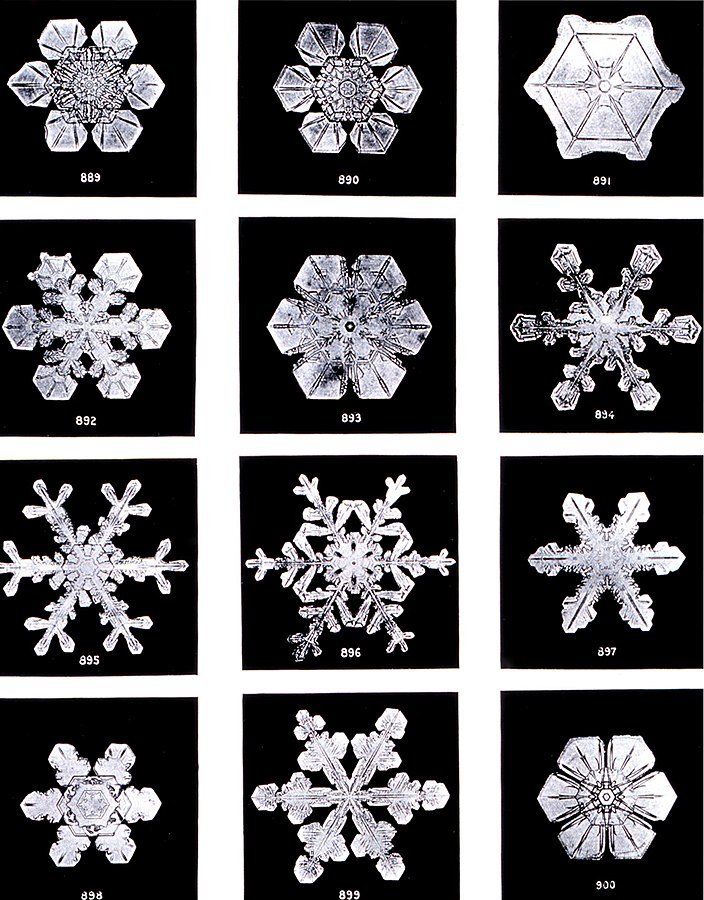What do you think of when you hear the word snowflake? What usually comes to mind are the tiny six-sided little works of art. But did you know that snowflakes are actually made of multiple snow crystals? And not all snow crystals are alike! Scientists use the word snowflakes to describe the fluffy bunches of snow crystals.
How does a snow crystal begin to form?
A snow crystal begins its formation in the clouds as water in the form of gas called water vapor. That water vapor will then attach and freeze onto tiny dust particles or pollen in the air to create seed crystals. These seed crystals will bump into water molecules in the clouds and eventually will form into a six-pointed shape called a hexagon, which is the basic shape of a snow crystal. As the seed crystal continues to move around in the clouds, it bumps into more water molecules. These water molecules attach themselves to each of the six points on the hexagonal shape forming the arms or branches of the snow crystals.
Why are no two snow crystals alike?
The shape of snow crystals depends on two factors; temperature and how much water is in the air. The colder the temperature is, the pointier and more complex the arm formations. Warmer the temperature and less water in the air will result in a snow crystal with smaller and fewer arms. The snow crystals will continue to change their shape as they fall from the clouds. The amount of water in the air, the temperature, and the wind that passes through will continue to change the formation of the snow crystals. As they follow their unique paths down to the ground, these factors will continue to reshape each of the snow crystals giving each their own distinct designs.
Snowflakes under the microscope Source

